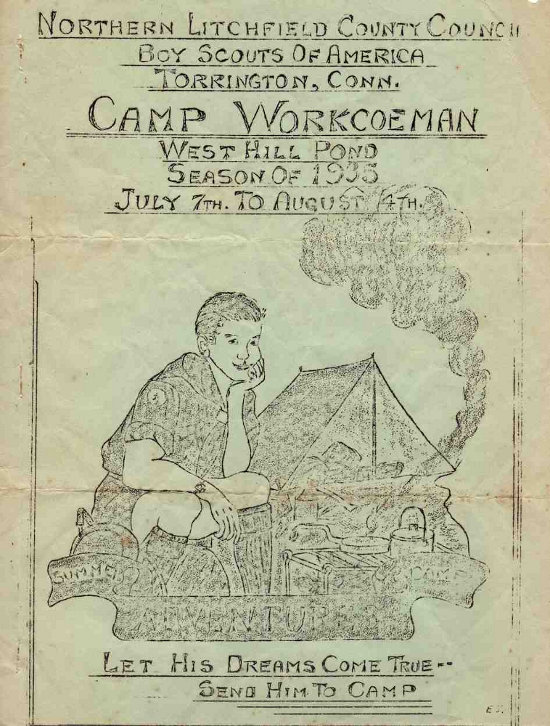The Silver Jubilee
“The year 1935 marks the twenty-fifth birthday celebration of the Boy Scouts of America. During these years the value of our organization in building character and in training for citizenship has made itself a vital factor in the life of America” noted Franklin Roosevelt on the eighth of February, when he spoke over a country-wide radio broadcast to commemorate the Silver Jubilee. President Roosevelt then went on to invite 30,000 Scouts from across the land to the District of Columbia for a National Jamboree. Chief Scout Executive James West then asked the boys listening in to unite in pledging the Scout oath. In the Torrington High School Auditorium, four hundred of the six hundred Scouts of the Northern Litchfield County Council joined in with boys across the nation. The excitement of 1935 carried over to local affairs as well; just before the camp season opened, the council Scouts again united to march in the Connecticut Tercentenary parade through the streets of Torrington.
With the uncertain possibility of economic recovery, and the council trying to raise funds for a new dining hall, Camp Workcoeman operated under an unusual schedule in 1935. As in 1934, the council budget allowed for a five-week season, but only three weeks of the traditional program was offered. During the fourth week, camp was open to all, but with an eye towards boys who could not afford the seven-dollar weekly fee. Scouts could attend on a daily basis, for seventy-five cents at a time. Instead of a fifth week, the staff put together a four-day program for the Jamboree Contingent. While the boys got a chance to participate in the usual hiking and swimming, the twenty-five Scouts spent most of their time practicing for their songs for the Region One opening show.
Scouts who applied to attend the Jamboree were required to get vaccines for smallpox and typhoid fever. No such inoculation for Polio existed, and while the Jamboree Contingent was at Workcoeman, an outbreak occurred in North Carolina. Cases spread into Virginia, and then, just ten days before Scouts were to arrive, appeared in the capital area; the Jamboree was canceled. Fortunately, the national council had scraped together enough funds to insure the event, so the boys and the councils were reimbursed for their fees. On the evening the Jamboree was supposed to open, Scouts were offered a nation-wide radio hookup, and listened to a broadcast of some of the songs written for the Jamboree. It did not quite alleviate the disappointment, but the boys still were able to sing along and hear some of the dramatic programs.
The image below shows a camp brochure from 1935, mailed to the parents of Scouts throughout the Northern Litchfield County Council. The illustration is based on Henry and John Hintermeister’s painting for the cover of the 1929 “Handbook For Patrol Leaders.”
